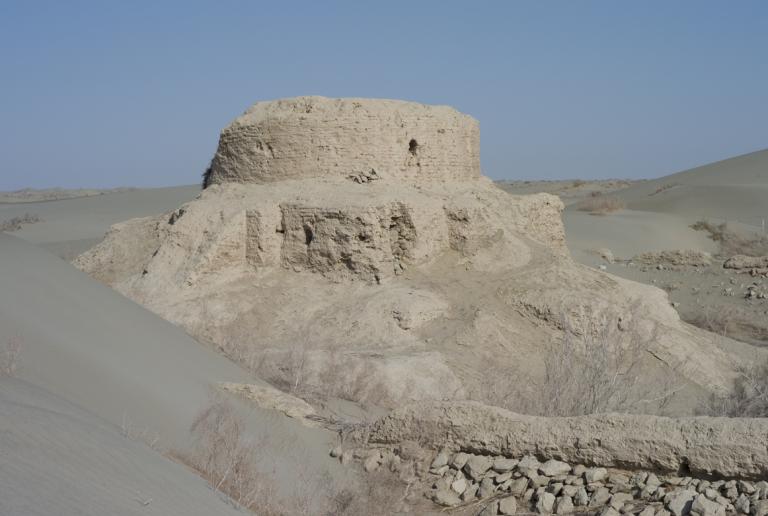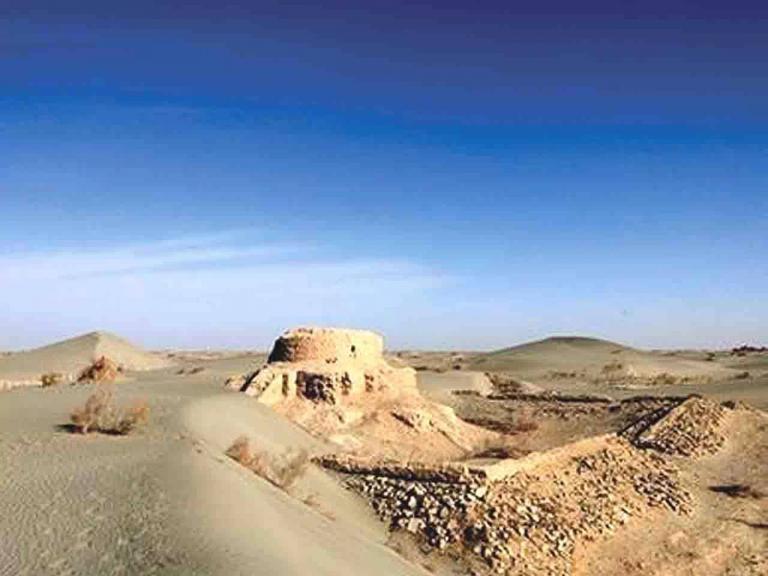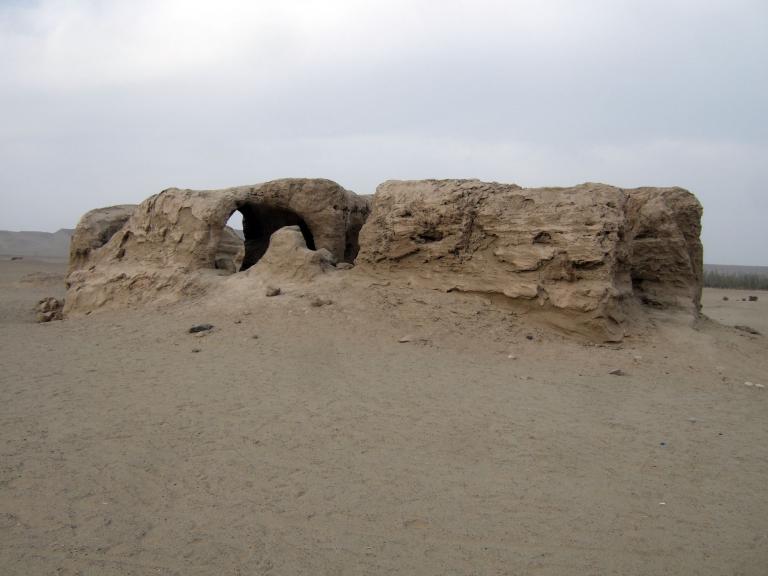Jevac Buddhist Temple Relics
4 min readLocated in the desert about 70km from the northwest of Gia Township,Luopu County of today’s Hetian,the Jevac Buddhist Temple Relics is a group of Buddhist temple buildings regarding a pagoda as the center.A courtyard was located around the pagoda,and a great number of clay statues and murals were inside and outside courtyard walls.The style of the statues was different from that of the statues in the Central Plain,with the clothing form having distinct South Asia style.The Jevac Buddhist Temple Relics is the only Buddhist temple relic with the Gandhara style well preserved in Hetian.During the popular period of Hetian Buddhism from the Eastern Han Dynasty to the Wei,Jin and Southern and Northern Dynasties,large and small Buddhist temples,clay statues and murals were on each city wall in Hetian,and the Jevac Buddhist Temple was the representative in that period.As a Buddhist building relic well preserved in Xinjiang and an important relic for studying the Buddhist culture in Hetian,the Jevac Buddhist Temple has an extremely high historical and cultural value and now is the national key cultural relic protection unit.

Jevac means “Pavilion”and “Balcony”in Chinese. The Jevac Buddhist Temple Relics is a group of Buddhist temple buildings regarding a pagoda as the center. It consists of square courtyard walls. The pagoda is located at the center of the courtyard, and temples outside the courtyard. The area of the Jevac Buddhist Temple Relics is 2,300m2. There are a great number of murals and clay statues inside and outside the courtyard walls. All the stories in themurals were Buddhist stories, including reincarnation pictures. The clay statues are backing against inner and outer walls of the courtyard walls. The whole pagoda is divided into three layers. The first layer is a square Buddha base with the height of 2.5m and the side length of 24m; the second layer is also square, with the height being 2.8m and the side length being 11 meters; and the third layer is circular and hollow, with the height being 3.6m and diameter at the top being 9.6m.A lot of murals, clay statues and Buddha statues are inside the courtyard walls. All the stories in the murals are Buddhist stories. The clay Buddha statues are posted on the inner and outer of the courtyard walls. Agreat number of red, gray pottery pieces and Buddha residues are scattered outside the pagoda.

There is a small temple outside the east wall of the Buddhist temple. Some walls still remain, and the inner walls are coated with gypsum. An arched niche is on the inner wall of the east wall of the small temple and carved with arched lines reducing layer by layer. The lines are regular and fluent. It is said that there used to be a standing Buddha here, but the temple has been completely destroyed nowadays. Both the inner and the outer of the four courtyard walls have clay Buddha statue remnants. Some statues are buried in sand dunes, some are exposed outside, and some are completely destroyed. The statues are bundled to form a barrel shape by reeds, then white glue clay is pasted to form the shape of the statue body, and red glue clay is painted to draw thin parts finally. Originally, there were colored paintings, but nowadays they have been weathered and disappeared. The Buddha statues are about 3m high, arranged at a spacing distance about 70cm. The clay Buddha statues have obvious patterns and decorative clothe lines of the Gandhara style.
Located in the courtyard, the pagoda belongs to adobe masonry. Many places have been excavated by people. The base of the pagoda is basicallysquare about 6 or 7m high. The pagoda body is of a complex-bowl shape, and the residual height is 3m. Seen from the remnants, the pagoda is not a multilayer pagoda, but a typical Indian complex-bowl pagoda.
Red and black palladium and a few colorfully glazed pottery pieces are scattered inside and outside the courtyard. Human bones, clay Buddha statues and edge-sheared Wuzhu copper coins are visible on the ground. There are also building traces nearby, but the range is not large.
After 8 days’ excavation in Jevac from 11th to 18th, April of 1901, Stein obtained some precious cultural relics, mapped a relic map and photographed 91 Buddha statues unable to move. Stein discovered that the style of the Buddha statues was extremely similar to a lot of Buddha statues in the temples in the northwest of India.
In September of 1906, Stein came to Jevac again. He discovered that most clay Buddha statues had been destroyed by local treasure hunters. He dug many cultural relics as well, and checked his drawings painted in 1901.
In 1928, German Trinkler wantonly excavated in Jevac and obtained 6 boxes of relics. He was detained by Hetian authorities, but the relics were still carried abroad. Now, the relics are in Bremen City of Germany.
Chinese archaeologist Huang Wenbi passed by Jevace in his archaeological experience on 12th, June of 1929. Later on, he mentioned this experience in the Archaeological Record of the Tarim Basin.
In 1942, the authorities of Luopu County discovered the Jevac Relics, andthe county magistrate Zhou Baocheng dispatched rural laborers including Rozah to excavate the north wall of the temple, excavating 3 statues painted in gold,20 complete clay statues, Wuzhu coins, clay monkeys, broken ancient coins, beads, sandalwood, etc. The next year, these relics were submitted to th provincial government, and a historical relic exhibition was held in Hetian by the established Committee for the Preservation of Antiquities, but these relics were missing afterwards.









